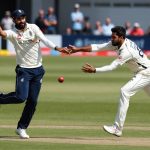Installing a Sport Bike Tire Pressure Monitoring System: A Step-by-Step Guide for Real-Time Pressure Insights
Why You Need a Tire Pressure Monitoring System
When it comes to maintaining your sport bike, one of the most critical aspects is ensuring the correct tire pressure. Proper tire pressure is not just about comfort and control; it’s also a matter of safety. Incorrect tire pressure can lead to reduced handling, increased energy consumption, and even accidents. In recent years, the advancement in technology has made it easier for people to monitor their tire pressure in real time, thanks to Tire Pressure Monitoring Systems (TPMS).
“As a cyclist or motorcyclist, keeping correct pressure in your tires is a matter of control, comfort, and ultimately rider safety,” notes an article on the Outrider TPMS system[2].
This might interest you : Enhance Your Night Riding Experience: Tips for Boosting Visibility on Your Sport Bike in the UK
Choosing the Right TPMS for Your Sport Bike
Before you start the installation process, you need to select the right TPMS for your sport bike. Here are a few key considerations:
Types of TPMS
- External Sensors: These are mounted on the valve stem of your tire and are generally easier to install but can be more prone to damage.
- Example: The Universal Motorcycle TPMS with external sensors is a popular choice for its ease of use and real-time monitoring capabilities[1].
- Internal Sensors: These are installed inside the tire, often attached to the base of the tubeless valve, and provide more accurate readings without the risk of external damage.
- Example: The Outrider TPMS is designed to fit inside tubeless tires, providing accurate and real-time pressure readings without the bulk[2].
Compatibility
Ensure the TPMS you choose is compatible with your bike’s model and tire type.
Also to read : Finding the Perfect Gear Ratio for Sport Bike Hill Climbing Adventures in the Lake District
- For instance, the Harley-Davidson TPMS is specifically designed for ’20-later Touring models and ’21-later RA1250 and RA1250S models[3].
Features and Accuracy
Look for systems that offer high accuracy and additional features such as temperature monitoring and puncture alerts.
- The Outrider TPMS, for example, offers +/- 0.7% pressure accuracy from 0-39psi and +/-1.4% accuracy from 39-85psi, and it is not affected by sealant[2].
Step-by-Step Installation Guide
Installing a TPMS can seem daunting, but it’s a manageable task with the right steps.
Preparing Your Bike
- Ensure Proper Parking: Park your bike on a level surface to ensure accurate readings.
- Check Tire Conditions: Make sure your tires are in good condition and free from any debris.
Installing External Sensors
- Remove the Valve Cap: Take off the valve cap to expose the valve stem.
- Install the Sensor: Screw the TPMS sensor onto the valve stem. Ensure it is securely tightened.
- Pair the Sensor: Follow the manufacturer’s instructions to pair the sensor with your display device or app.
- Example: The Deelife TPMS pairs via Bluetooth with Android and iOS devices[5].
Installing Internal Sensors
- Remove the Valve Core: Use a valve core remover to take out the core.
- Install the Sensor: Insert the internal sensor into the valve stem, ensuring it is securely seated.
- Replace the Valve Core: Put the valve core back in place.
- Pair the Sensor: Pair the sensor with your Garmin device or other compatible devices.
- Example: The Outrider TPMS pairs via ANT directly to Garmin cycling computers[2].
Setting Up and Using Your TPMS
Once installed, setting up and using your TPMS is relatively straightforward.
Pairing with Devices
- Most modern TPMS systems can pair with cycling computers, smartphones, or dedicated display units.
- “The Outrider is there to make your life easier. Residing inside your tubeless tires, Outrider sends accurate, real-time tire pressure readings and alerts to your Garmin device so you’re always in the know,” explains the Outrider TPMS documentation[2].
Monitoring Pressure and Temperature
- Use the app or display unit to monitor real-time pressure and temperature readings.
- The Universal Motorcycle TPMS, for instance, comes with an LCD display that shows both pressure and temperature readings[1].
Alerts and Notifications
- Set up alerts for low pressure, high pressure, and punctures to ensure you are always aware of your tire’s condition.
- The Outrider TPMS sends puncture notifications directly to your Garmin device, ensuring you are alerted immediately if there is an issue[2].
Practical Insights and Actionable Advice
Here are some practical tips to get the most out of your TPMS:
Regular Checks
- Even with a TPMS, it’s important to physically check your tires periodically to ensure the system is working correctly.
- “While TPMS systems are highly accurate, it’s always good to do a physical check every now and then to ensure everything is in order,” advises a cycling enthusiast.
Battery Life
- Keep track of the battery life of your sensors to avoid any unexpected failures.
- The Outrider TPMS, for example, has a battery life of approximately 2 years, with replaceable CR1225 batteries[2].
Socio-Economic Benefits
- Proper tire pressure can lead to reduced energy consumption, lower carbon dioxide emissions, and less traffic congestion in the long term.
- “Maintaining the right tire pressure is a small step towards a more sustainable future, contributing to net zero goals and reducing our carbon footprint,” notes a scholar on Google Scholar.
Comparative Analysis of Popular TPMS Systems
Here is a comparative table of some popular TPMS systems:
| Feature | Universal Motorcycle TPMS | Outrider TPMS | Harley-Davidson TPMS |
|---|---|---|---|
| Sensor Type | External | Internal | External |
| Compatibility | Universal | Tubeless tires | Specific Harley-Davidson models |
| Accuracy | +/- 1% | +/- 0.7% (0-39psi), +/-1.4% (39-85psi) | +/- 1% |
| Additional Features | Temperature monitoring | Puncture alerts, sealant compatibility | Temperature monitoring |
| Battery Life | 1-2 years | Approximately 2 years | 1-2 years |
| Weight | N/A | 3.5g per wheel | N/A |
| Price | Around $50-$100 | Early Bird deals: $55/pair | Around $100-$200 |
| Display | LCD display | Garmin device compatibility | Dedicated display unit |
Installing a TPMS on your sport bike is a wise investment for any serious rider. It ensures real-time pressure insights, enhances safety, and contributes to a more sustainable and energy-efficient riding experience.
“Taking the guesswork out of tire pressure monitoring can significantly enhance your riding experience, whether you’re a casual cyclist or a seasoned motorcyclist,” concludes a cycling expert.
By following the steps outlined above and choosing the right TPMS for your needs, you can enjoy a safer, more comfortable, and more efficient ride, while also doing your part for the environment by reducing energy consumption and carbon dioxide emissions.






